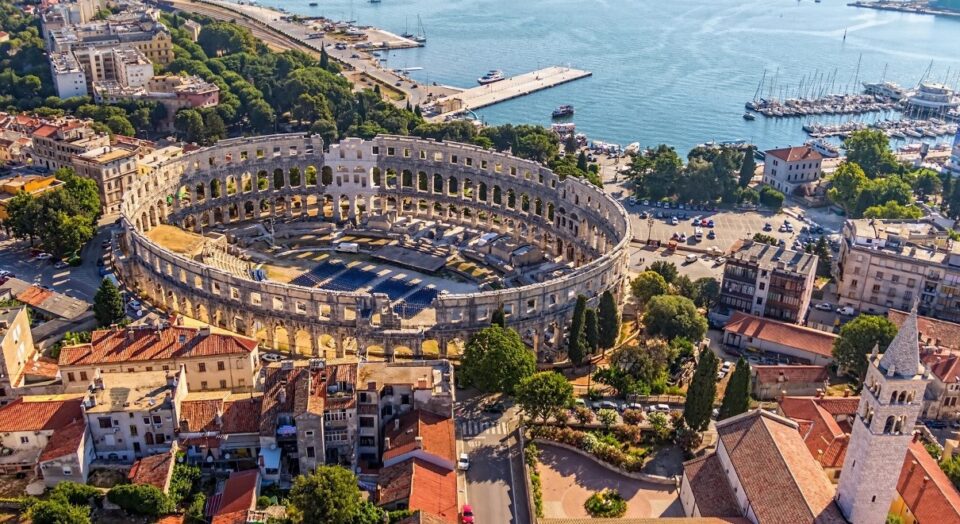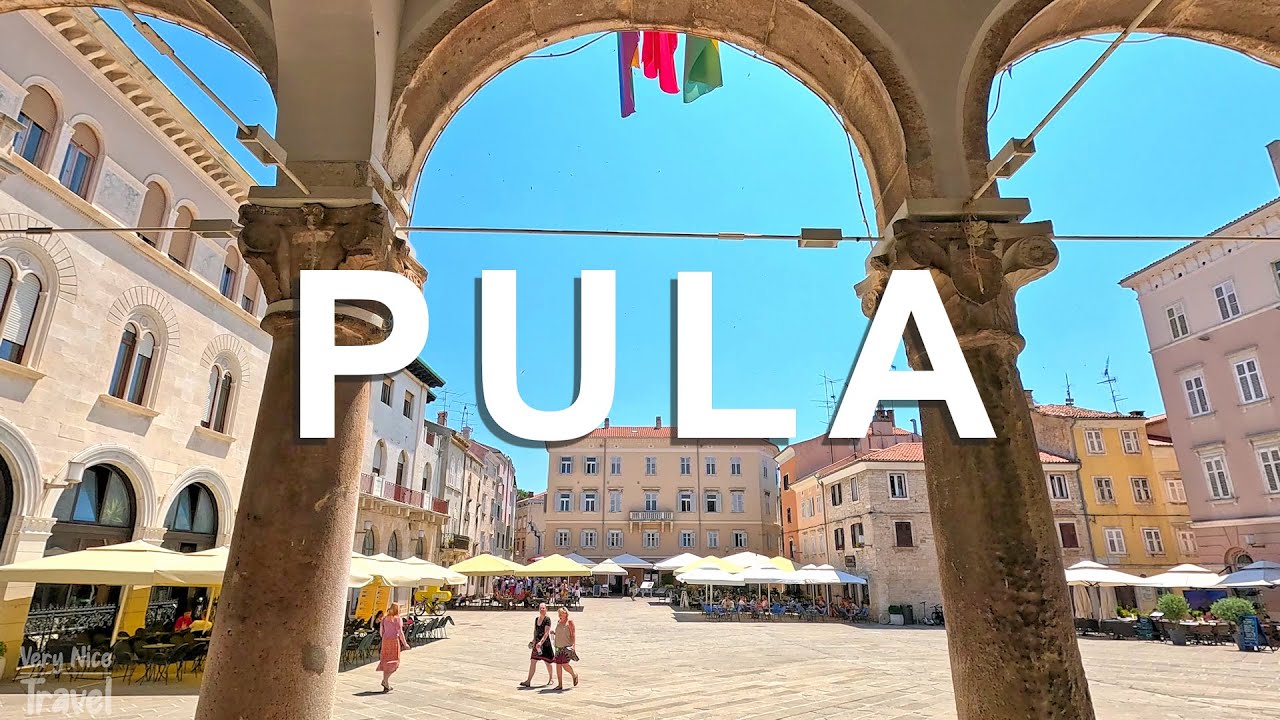Pula (Croatia) is a city located on the west coast of the country – the Istrian peninsula. A seaside resort, a large port, a place where ancient people lived and the historical center of Croatia, Pula is also one of the top 100 cities for cultural recreation. It is home to more than 57 thousand people, most of whom work in the service and tourism sectors. Local residents are engaged in winemaking, fishing and diving, so these activities are most popular with travelers.
What to do in Pula, which beach is considered the best and where are the most interesting attractions? See the answers in this article.
Historical background
Pula is an ancient Greek colony. It was founded in the 4th century BC and became a strategically important city after coming under the control of the Roman Empire. From 478, Pula belonged to Venice, after which it was ruled by Franks, Slavs and Ostrogoths, who alternately seized this territory. At the end of World War II, the country passed from the possession of Austria to Italy, after which a few years later it became part of the Kingdom of Yugoslavia. Since 1991, Pula has been part of independent Croatia.
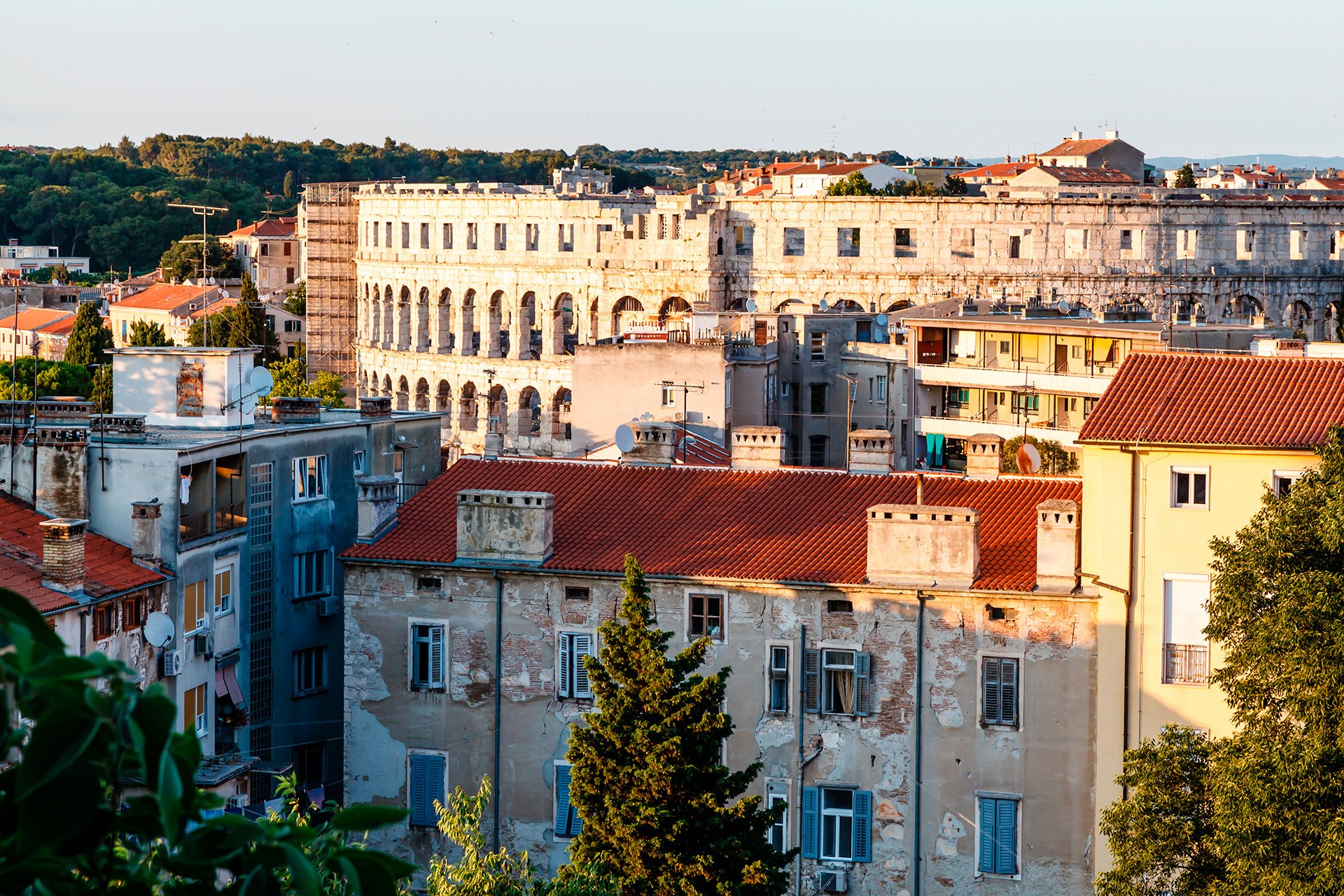
It is the eventful history that has made the city what it is now – interesting, diverse and unusual. The mix of Roman, Greek, German and other cultures was reflected not only in the multi-ethnic population of the region, but also in the architecture and main attractions.
Beaches of Pula
Peschana Uvala
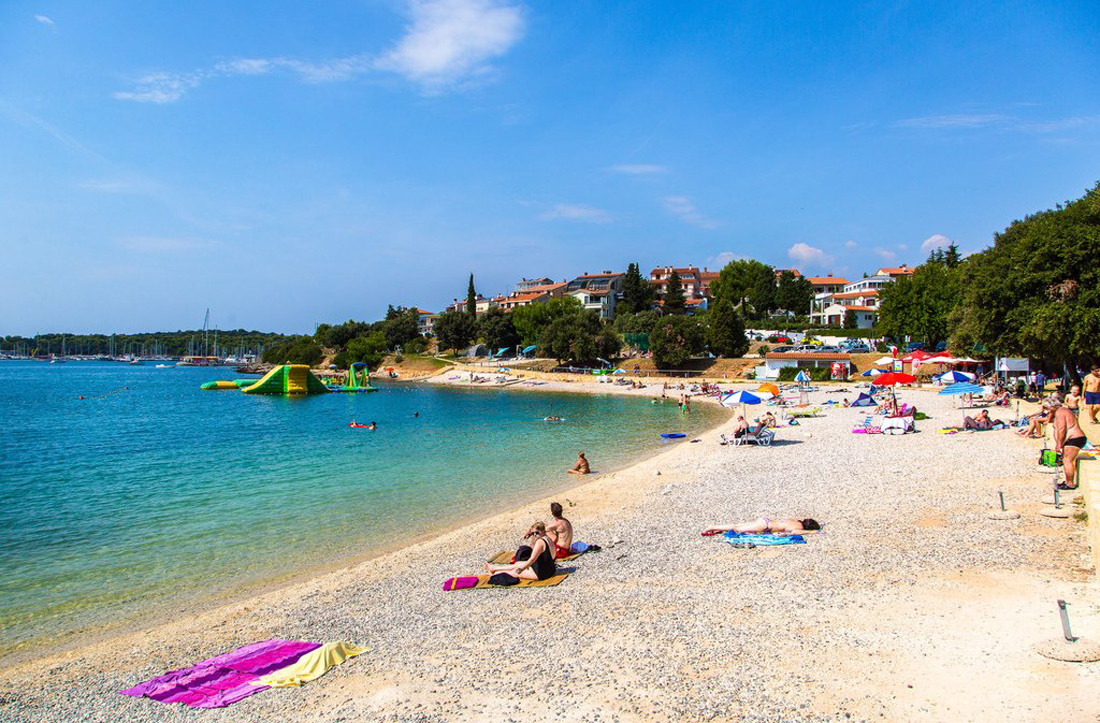
A wide pebble beach is located 4 km south of Pula in the village of the same name. Due to its convenient location between two peninsulas, Peschana Uvala is considered a good place for families with children. The sea here is always clean and calm, and for small travelers, a gentle descent into the water will be convenient. In addition, the beach is suitable for those who want to dive from a height – on its western part there are small beautiful rocks.
There is no organized entertainment on the beach, as well as noisy cafes or shops, so active tourists may find it boring.
Bijeca
One of the few sandy beaches in Croatia is located near the village of Medulin, 14 km south-east of Pula. Despite the tempting offer to bask in the warm sand, many tourists do not come here for the second time. The main problem is that Biyetsa here is an inconvenient entrance to the water and large stones that are not visible under water. On the bank of zachataya you can see garbage. The sea here is clear, but shallow-waist-deep water. Sun loungers and umbrellas are available for rent.
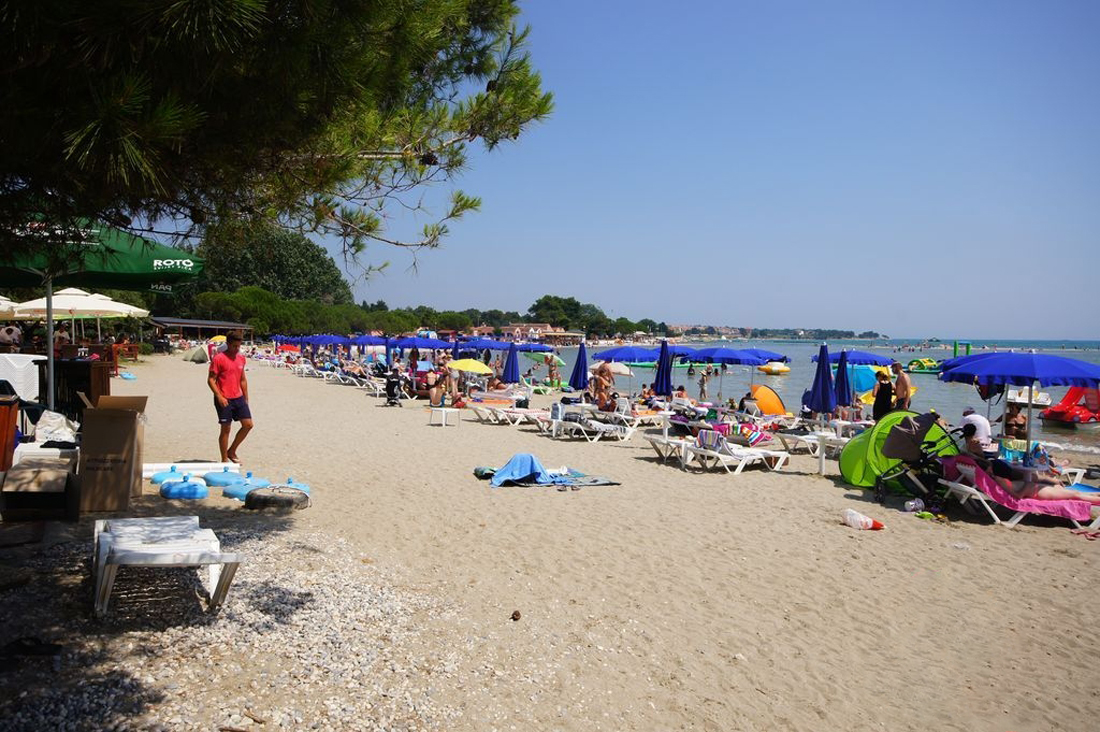
Biyetsa also has advantages-there are several cafes, a supermarket and a children’s goods store on the beach, and thanks to the sandy surface and small depth, it warms up quickly. In the village of Medulin itself, you can get a closer look at traditional Croatian cuisine in home cafes and restaurants.
Umbrella
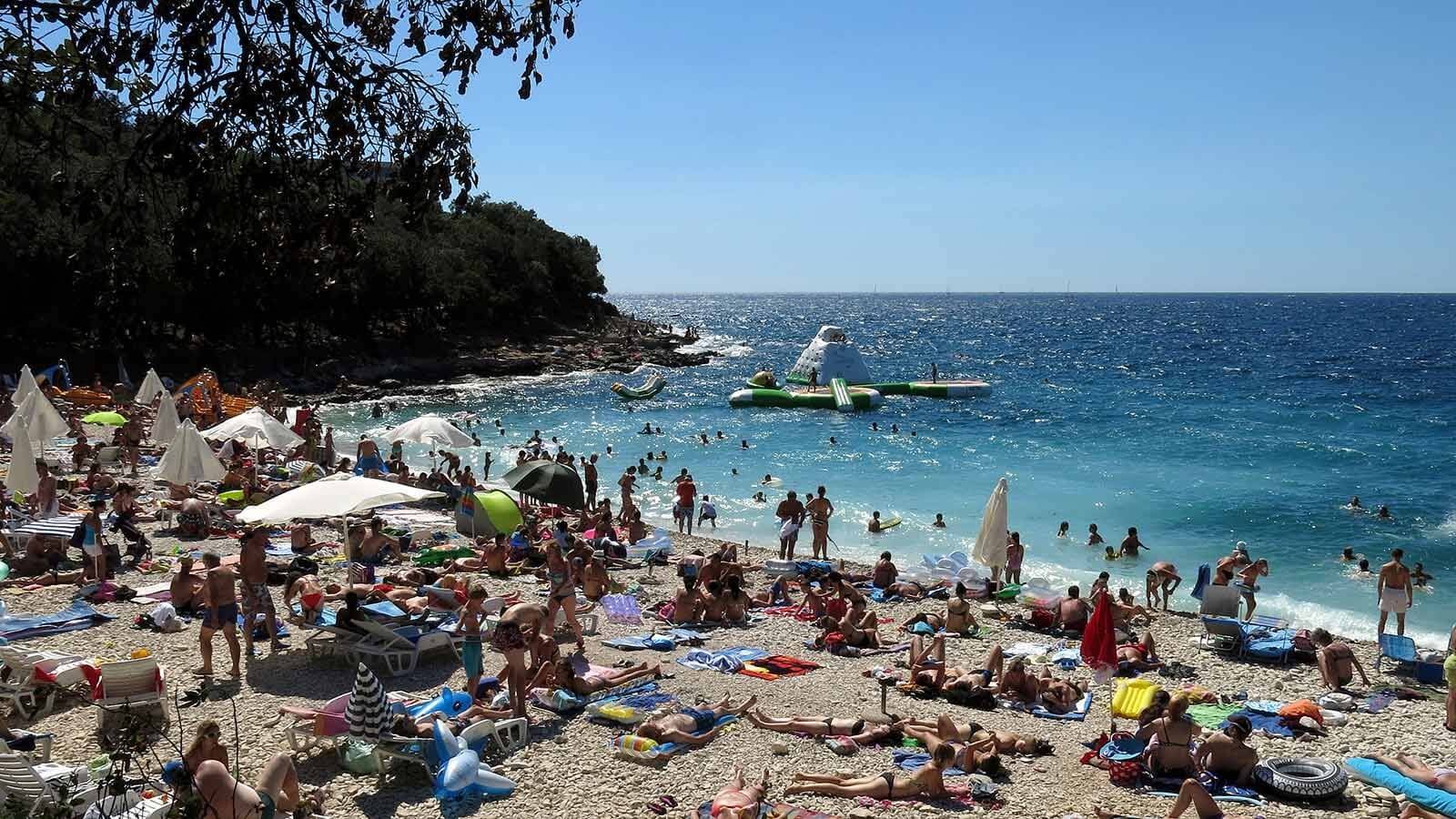
According to the reviews of tourists who visited Pula (Croatia), Umbrella is the best state beach in the city. Set in a picturesque area with surrounding cliffs and groves, it offers sun loungers and umbrellas, and offers a variety of activities such as diving or boat trips.
The beach is pebbly, the descent to the sea is gentle, from the hot rays of the sun you can hide under one of the trees of the coastal grove. On its territory there are several shower cabins and changing rooms, there are public toilets, two cafes, a small playground. From several towers, rescuers monitor the safety of travelers around the clock.
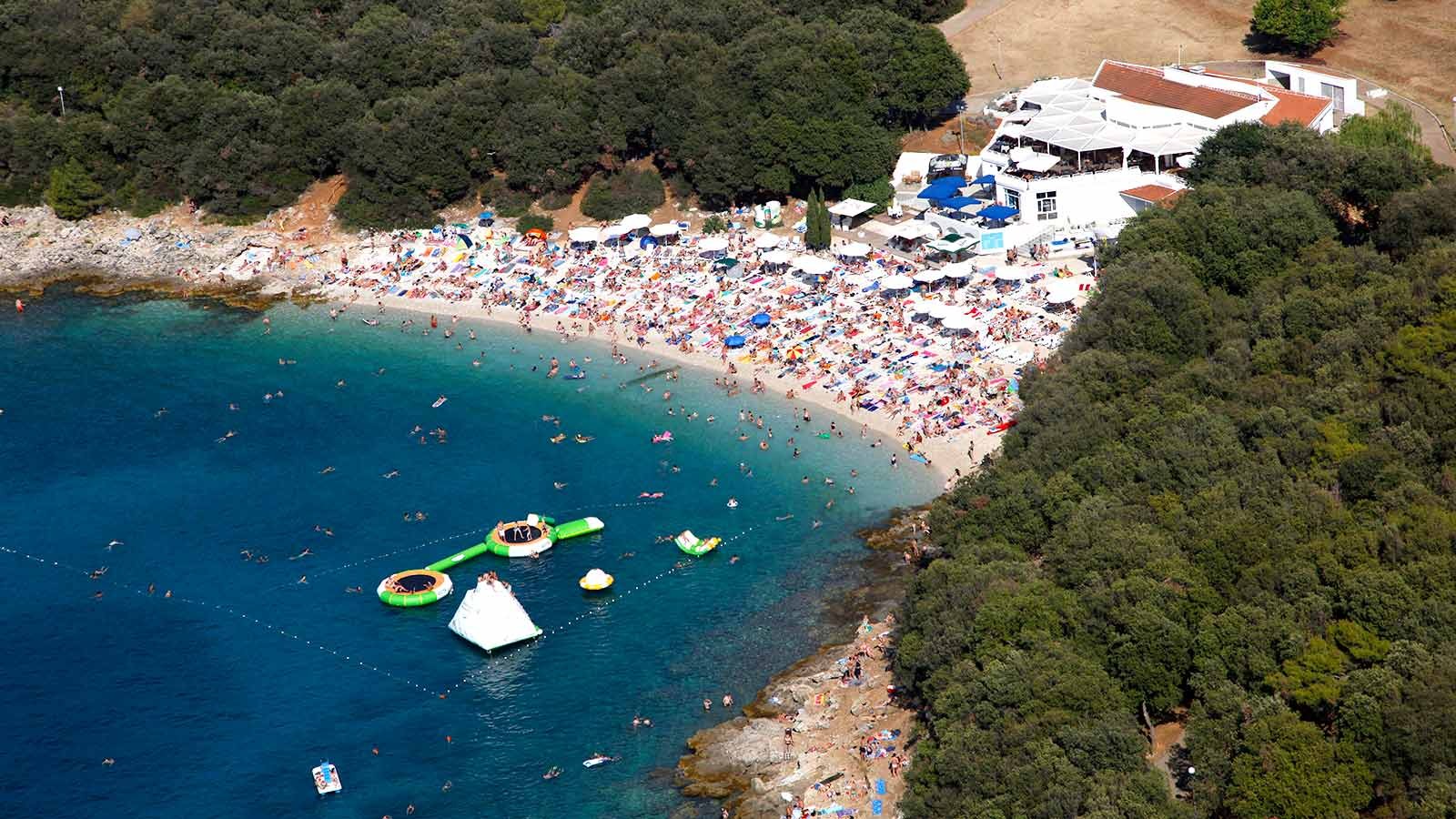
The only drawback of the beach is the large number of tourists, but its popularity only once again confirms the excellent quality of recreation in this place.
Please note! The cleanliness and comfort of Umbrella Beach is confirmed by the Blue Flag, installed after an appropriate inspection by the Environmental Education Foundation.
Stozha
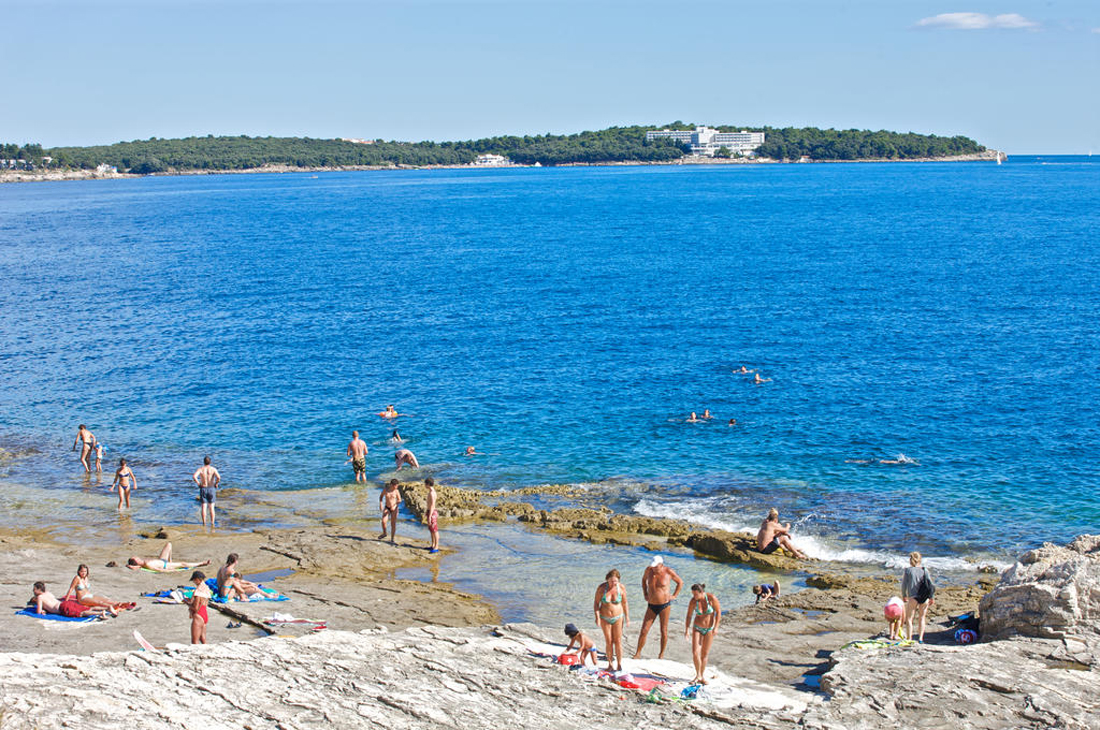
This clean and picturesque beach on the Adriatic coast is located 3 km south of Pula. Surrounded by dense groves with a calm and clear sea, it is very popular among active tourists. The beach is covered with large pebbles and stones, equipped with two convenient entrances to the water and the campsite of the same name, where you can play volleyball, golf or basketball for a small fee. Fans of extreme activities can dive from small rocks or dive underwater with scuba gear.
Valkaneh
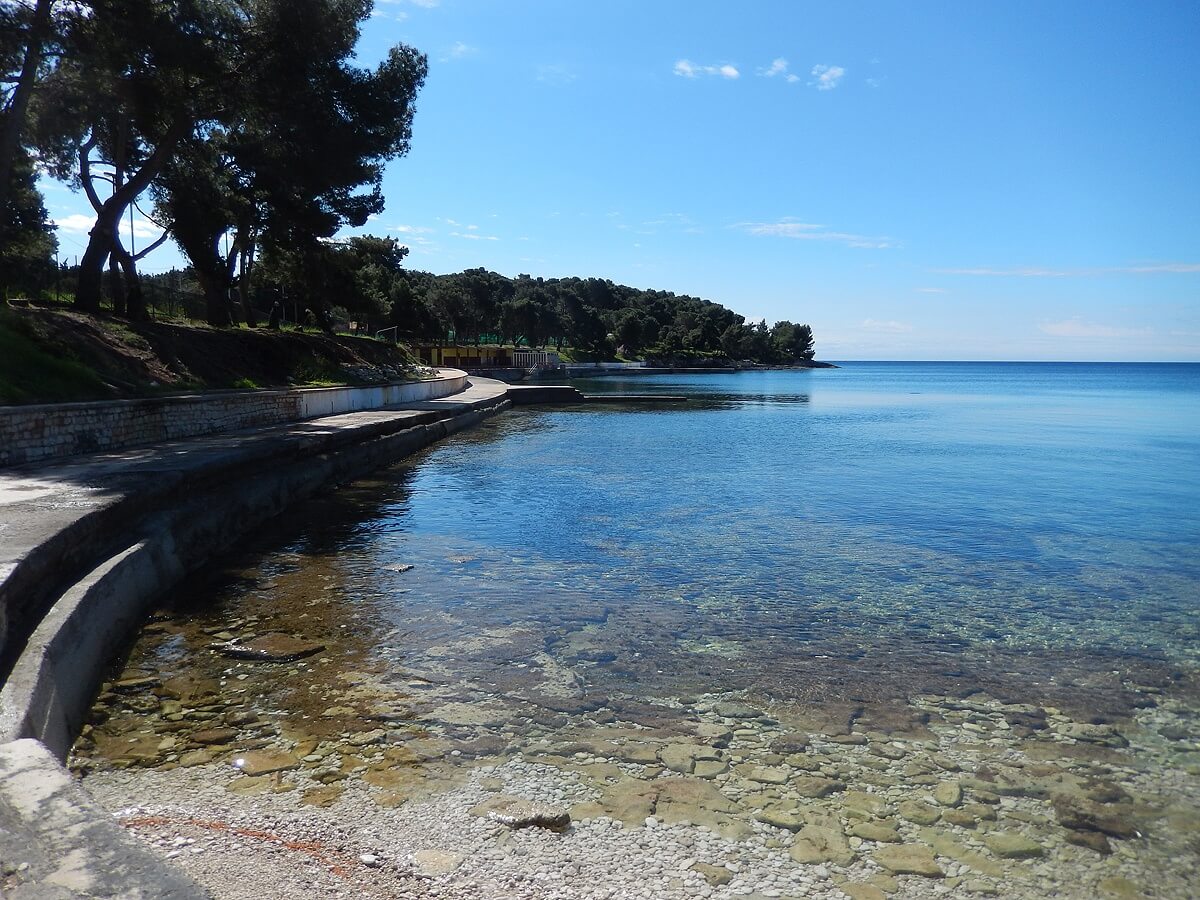
One of the best beaches in Pula and Croatia in general is located in the main bay of the city, near the Hotel Pula. For the purity of water, sand, compliance with environmental standards and comfortable recreation conditions, Valkane was awarded the Blue Flag of the FEO. The beach has sun beds and umbrellas, several toilets, changing rooms, showers, restaurants and a children’s playground. In addition, you can rent water sports equipment or a boat, play football, volleyball or tennis in the sports complex. There is a small forest nearby, and the nearest grocery stores are half an hour’s walk away.
Important! Valkan has all the facilities for people with disabilities. Especially for them, in one part of the beach there is a convenient gentle descent into the water.
Read also: Vacation in Croatian Rovinj-attractions, beaches, housing.
Plaža Vile
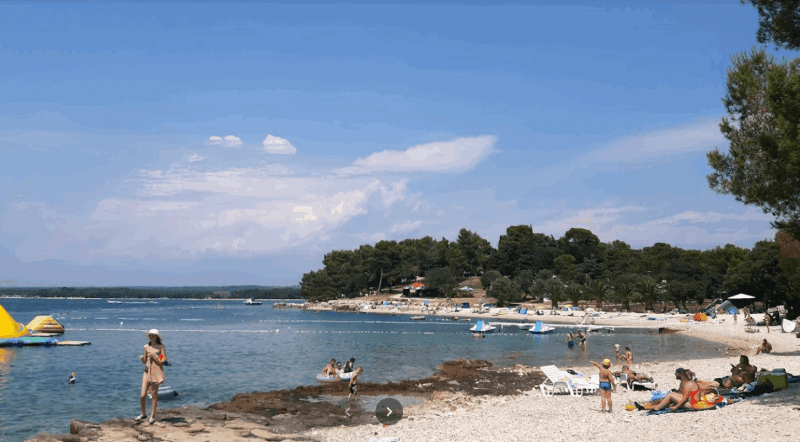
The beach is located 8 km north of Pula on the territory of the campsite. It can be reached by car in 20 minutes. From the parking lot, the road will take another 10 minutes on foot.
Thanks to the large number of trees, you can always stay in the shade. It is also possible to rent sun beds. There is a bar and restaurants nearby.
The surface of Vila beach is pebbly, it is better to have shoes for swimming. The entrance to the water is gentle, suitable for children. As a rule, there are not many people here, which also affects the cleanliness of both the pebbles and the sea.
Accommodation: hotel v / s apartments
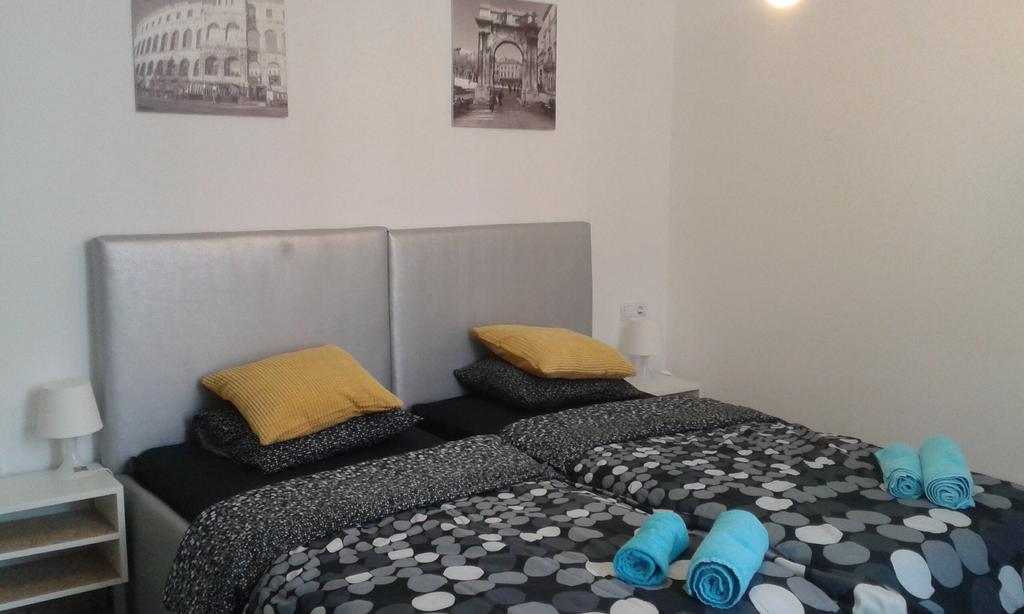
The city of Pula is one of the most expensive in all of Croatia. For a night stay in a hostel, you will have to pay from 14 euros per person, a night in a mid-level hotel will cost at least 40 euros for a couple, and prices in 4-and 5-star hotels in Pula by the sea start from 80 euros for a room for two.
Apartments in Pula (Croatia) they are slightly more expensive than hotels – the minimum cost of living here is 25 euros per day of rest in a small studio. For more economical tourists, there is another option – renting rooms from local residents, which will save up to 15 € per day.
Food: where, what and how much?
National cuisine is a real tourist attraction in Croatia. Since Pula is located on the sunny Adriatic coast, delicious seafood dishes are served almost everywhere. The best restaurants in the city, according to reviews of tourists, are::
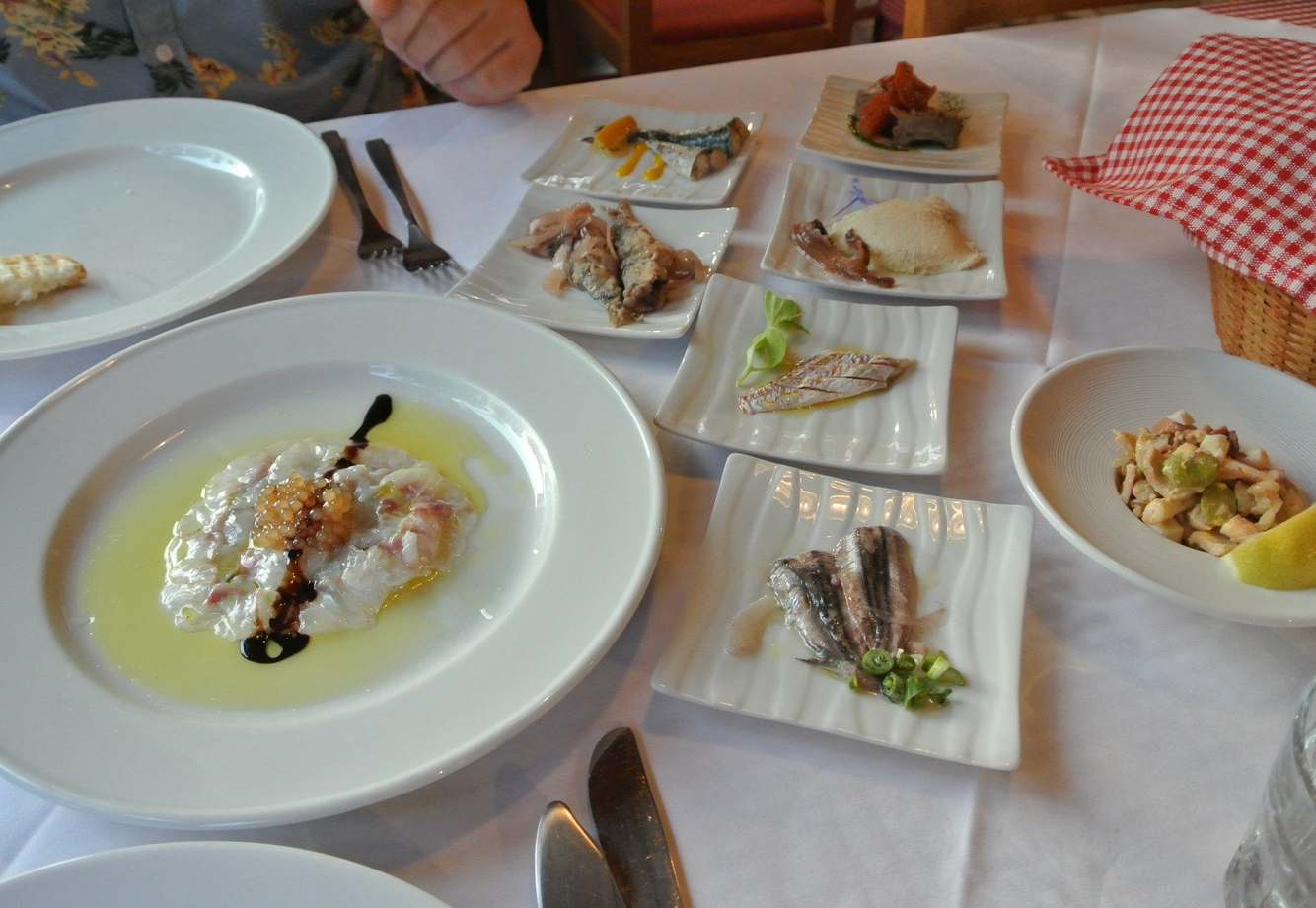
- Konoba Batelina. It serves fine brodette and pickled mussels. For a full dinner for two with a bottle of wine, you need to pay about 80 €;
- Oasi. The friendly staff and skillful hands of the chef attract hundreds of visitors to this restaurant every day. Here they perfectly prepare meat and fish, as well as surprise with delicious desserts and their unusual presentation. The average check is 90 € for two people.
A tip! Before ordering a double portion of Croatian delicacies, pay attention to the weight of the dish indicated on the menu. Most likely, it will be difficult to get pleasure from a kilogram of seafood, despite their excellent taste.
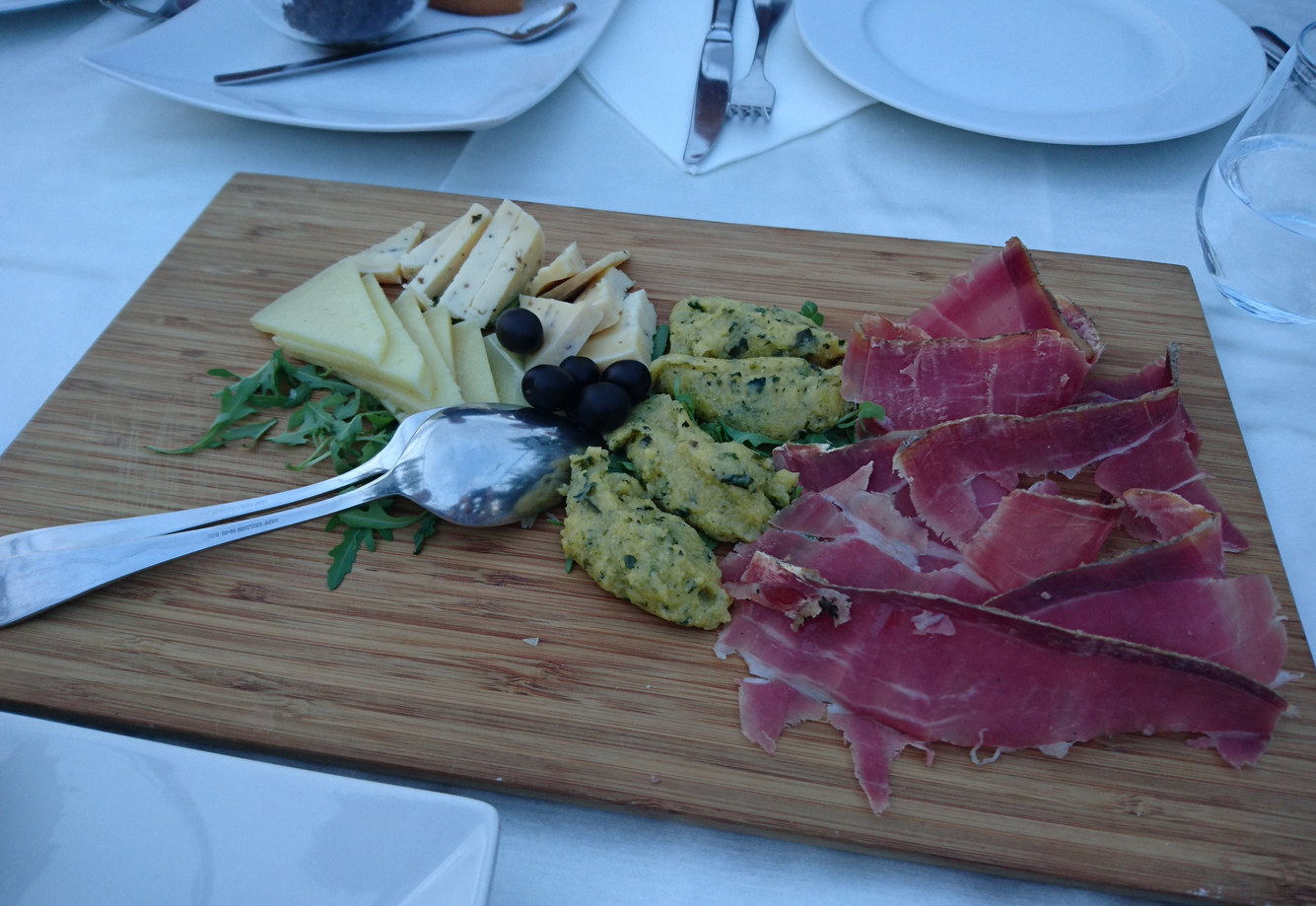
Those who want to try pastitsada or prosciutto without harming their wallet should visit inexpensive cafes of Pula with a high level of service, for example, Hook & Cook Pula or Bistro Alighieri. It serves European and Mediterranean cuisine at reasonable prices, and a full dinner for two people costs about 35-40 euros. Average prices for drinks:
- Local beer 0.5-3-4 €;
- Alcoholic cocktails — 6-9 €;
- Cappuccino — 1.5 €.
Places of interest in Pula
Amphitheater
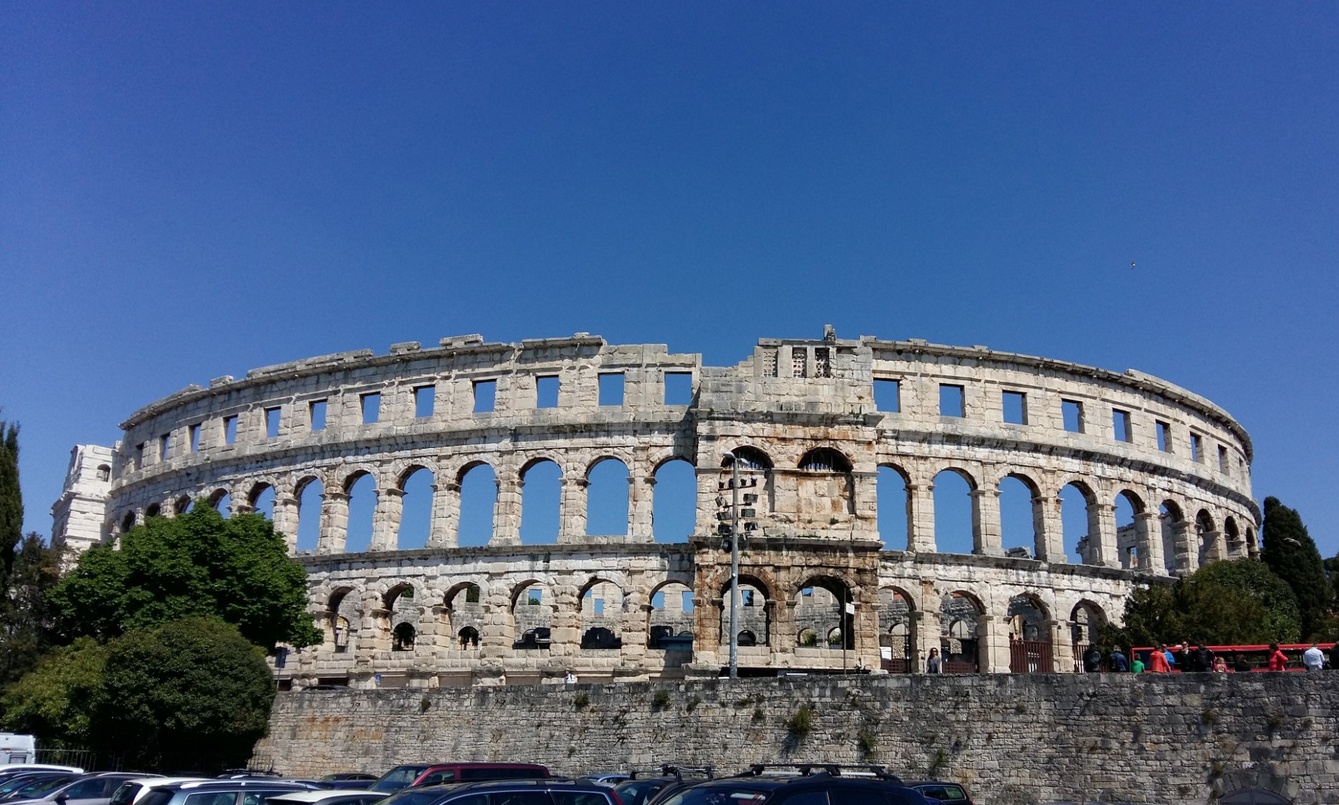
It was in Pula, one of the largest cities of the Roman Empire, that a huge amphitheater was built in the first century AD, which has survived to this day. Its walls have seen many things: bloody gladiator fights, tired citizens who turned the battle arena into a grazing area, rich fairs and world-wide wars.
Gladiatorial fights and hunting shows were held in the amphitheater. The audience did not have to pay an entrance fee; however, the amphitheater had a strict seating arrangement that reflected in detail the existing social hierarchy in terms of wealth and fame. Public trials were also held in the combat ring. Members of the Christian community were subjected to many cruel tortures in amphitheatres, which led to the massive development of the cult of the holy martyrs. After gladiator shows were outlawed in the early fifth century, the amphitheater fell into disrepair.
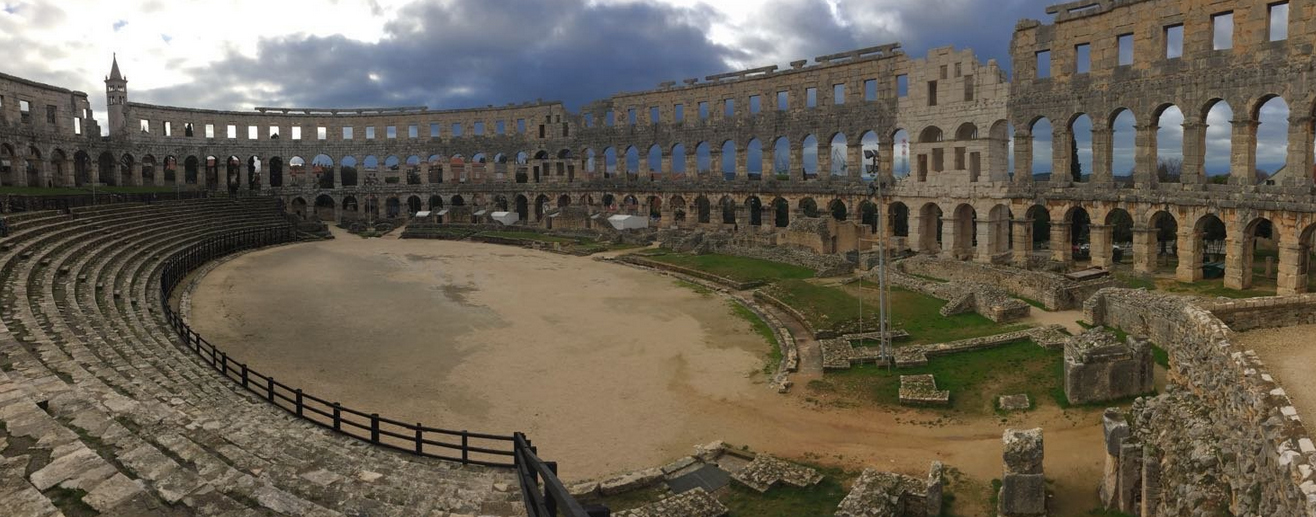
The landmark was restored in the 19th century, so it still completely preserves the outer ring. It is still supported by 4 towers, but now only artificial blood is shed in the elliptical arena, measuring 68*41 meters, and only during staged gladiator fights (organized every summer Sunday). From the upper spectator rows, you can enjoy a great view of the city, from where you can take many beautiful photos of Pula.
- Address: Flavijevska Street.
- Opening hours: from 8 am to midnight (July-August), until 21 (from the beginning of May to the end of September) and until 19 (from October to April).
- Entrance fee-70 kuna, for children-35 kuna.
Aquarium
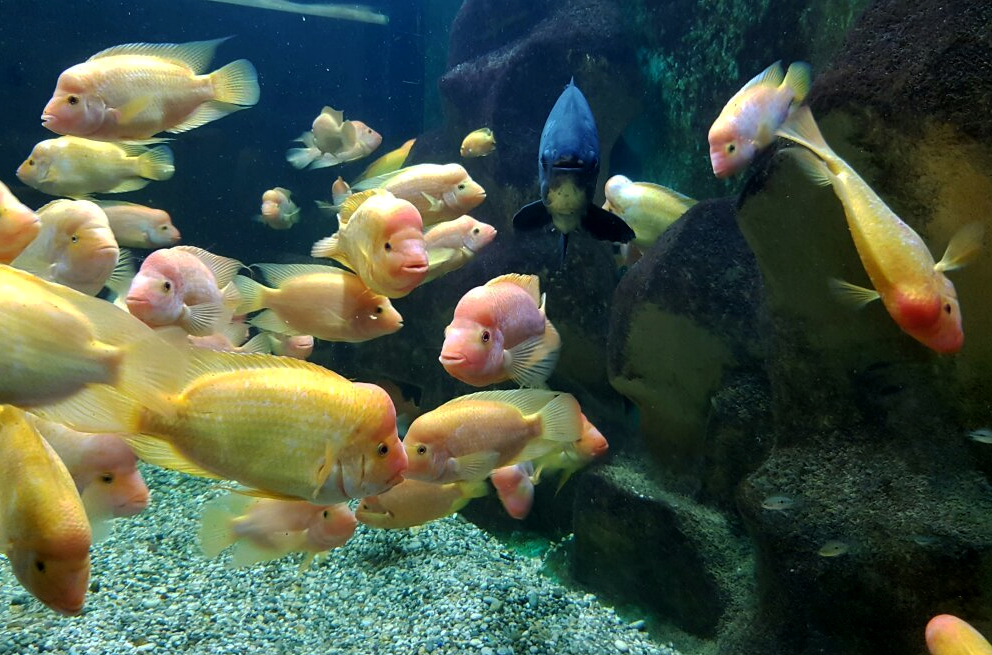
The aquarium is located in the 130-year-old fort “Verudela”, once part of the powerful defense complex “Fortress of Pula”. The historic fort is currently inhabited by hundreds of fish species from the northern and southern Adriatic and several tropical marine and freshwater species, as well as fish from Croatian lakes and rivers.
More than 1500 m2 of aquarium space and 5000 m2 of adjacent territory are adapted for the needs of the aquarium and its visitors. Most of the halls were used to display various exhibits, only the central part — the cannon block – and the moat surrounding the fort, 100 m long and 10 m wide, remained unused.
Travelers with children and just nature lovers should definitely visit this attraction of Pula. Among the most interesting fish you can see common and spiny rays, sharks, golden tiger, giant gobies, red hermit crabs and turtles, Mediterranean moray eels and many others.
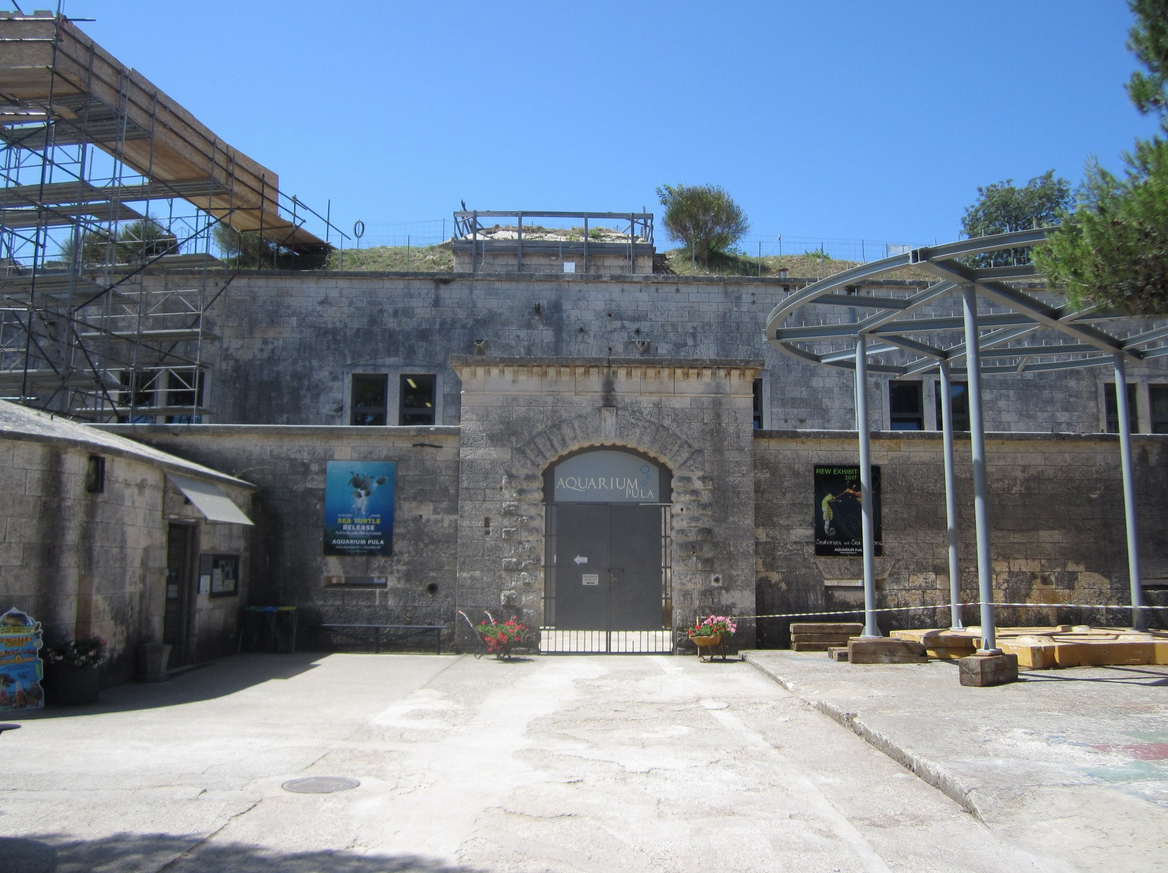
- The exhibition is stored on two floors of Fort Verudela, located on the boulevard of the same name,
- Open daily from 9 to 22 in July-August, from 9 to 20 in September-October, from 9 to 16 in the rest of the year.
- The price of an adult ticket is 130 kuna, for children aged 7-18 years, students and pensioners-100 kuna. Children under the age of three have free admission to all the sights of Pula and Croatia in general.
- Website: www.aquarium.hr.
Triumphal Arch of St. Sergius
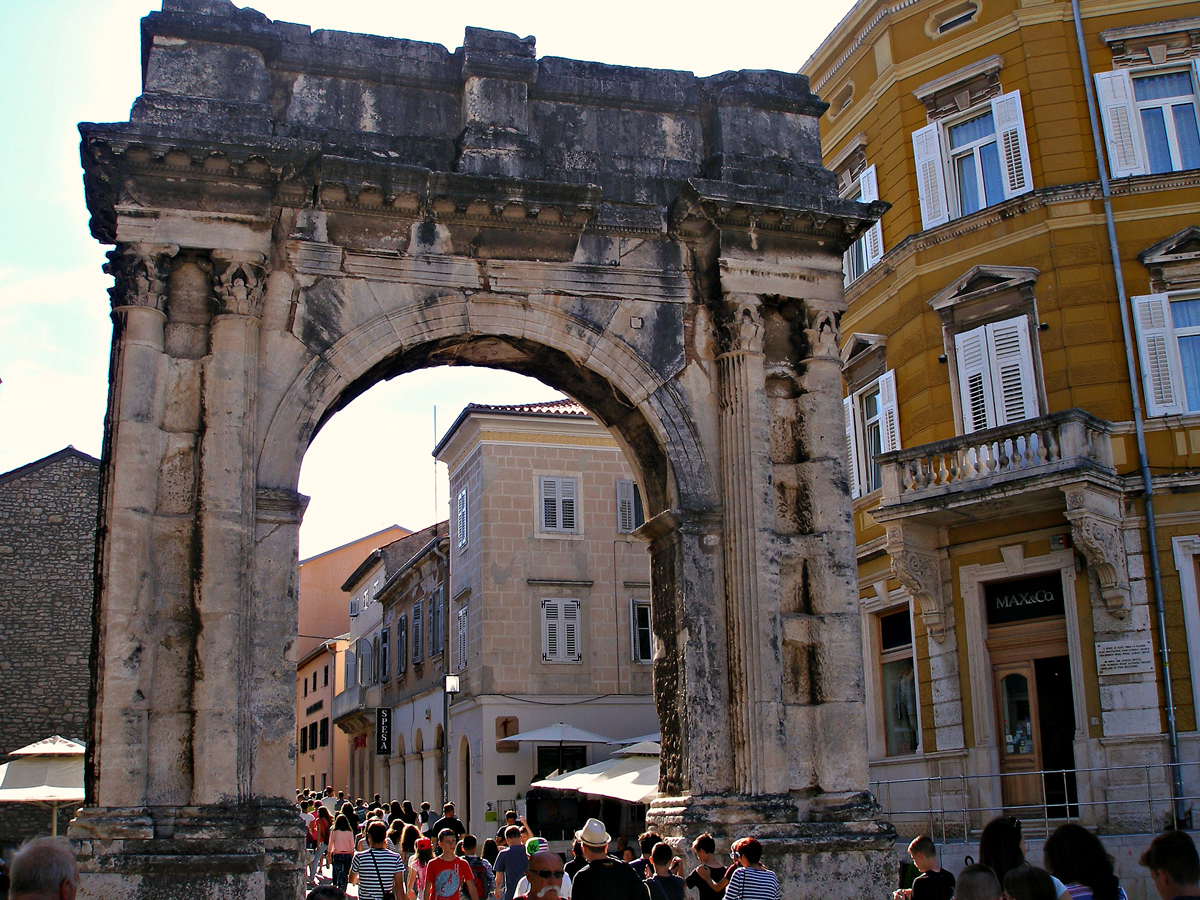
Another imprint of Roman culture two thousand years ago and the most photographed attraction in Pula. Despite the small size of the arch (8*4.5 m) compared to other similar buildings, it is of great historical and cultural value. Passing by the small square, be sure to approach the Arc de Triomphe to see the figures of the goddess of Victory, cupids and other heroes carved in stone by the skillful hands of ancient Roman architects.
Monastery and Church of St. Francis
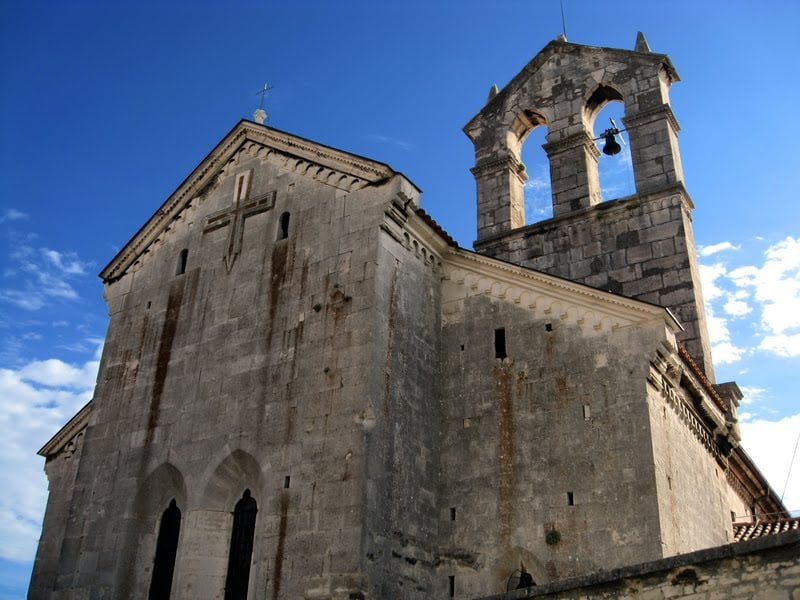
Built in the early 14th century, this architectural complex is one of Pula’s few Gothic-style attractions. The church and monastery are not decorated with tons of gold or rare icons of saints, on the contrary, their main value is in modesty and even severity, which their appearance reflects. Around the complex and in the buildings themselves, many ancient artifacts are stored – tombstones, ornaments, paintings, etc.
- Address: Uspon Svetog Franje Asiškog 9, Pula, Croatia.
- Opening hours: from 8 am to 6 pm. Services are not held in the church, and photos are allowed.
- Admission: 10 kuna, the price includes a gift card.
Temple of Augustus
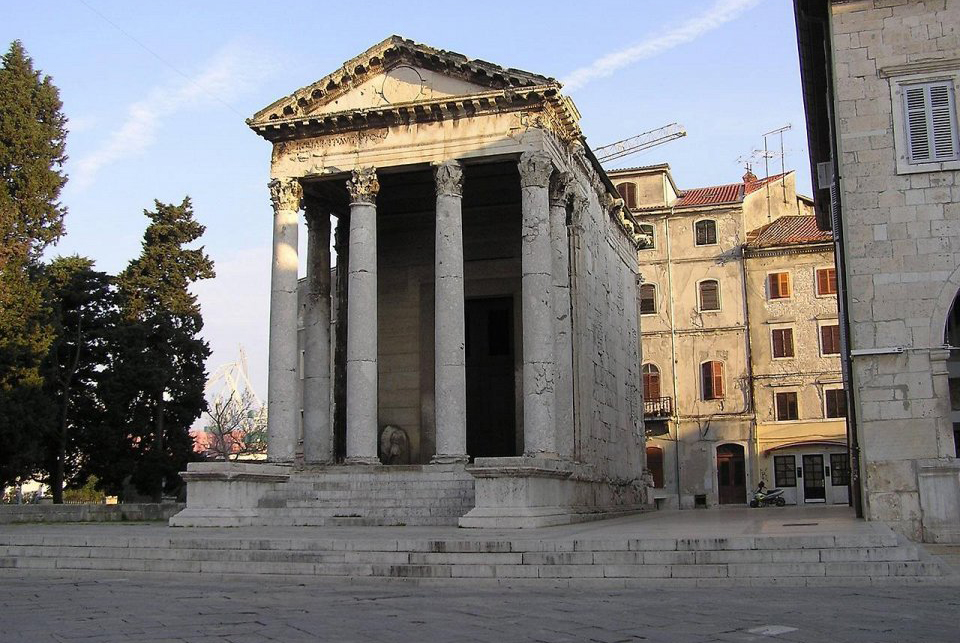
The temple, built in honor of the Emperor Augustus, is located in the central square of Pula and reaches 18 meters in height. It was built and consecrated in the period from 2 BC to 14 AD. Next to it are the remains of its “twin”, erected in honor of the goddess Roma.
The attraction consists of a large closed cell — cell and a small external vestibule, open towards the square, which is bounded on the front side by four, and on each side by one column with Corinthian capitals. The longitudinal walls of the cell extend into the outer vestibule, where they end in fluted half-columns. The walls of Cella are built of large symmetrically carved stone blocks. The church was almost completely destroyed during the Second World War, but in 1948 it was completely reconstructed.
The temple houses a collection of Roman statues from Istria, especially the marble ones depicting the emperors. The temple roof and pediment are framed by a cornice with cantilevers and coffered elements. In the center of the triangular pediment is a round medallion.
Today there is a historical museum here.
Advice from tourists visiting Pula! The Temple of Augustus is one of those attractions that are best viewed only from the outside, since the museum has less than ten exhibits, and the interior of such structures is not particularly valuable.
- Open: from 9 to 17.
- The entrance fee to the museum is 10 kuna.
Town Hall
The building was built in 1295 on the remains of the Temple of Diana. Then it was partially destroyed and an Italian palace with Baroque elements was erected in its place. At the end of the 20th century, they tried to restore the building, but in the end they only reinforced it with metal screeds, not wanting to deprive the city palace of its uniqueness.
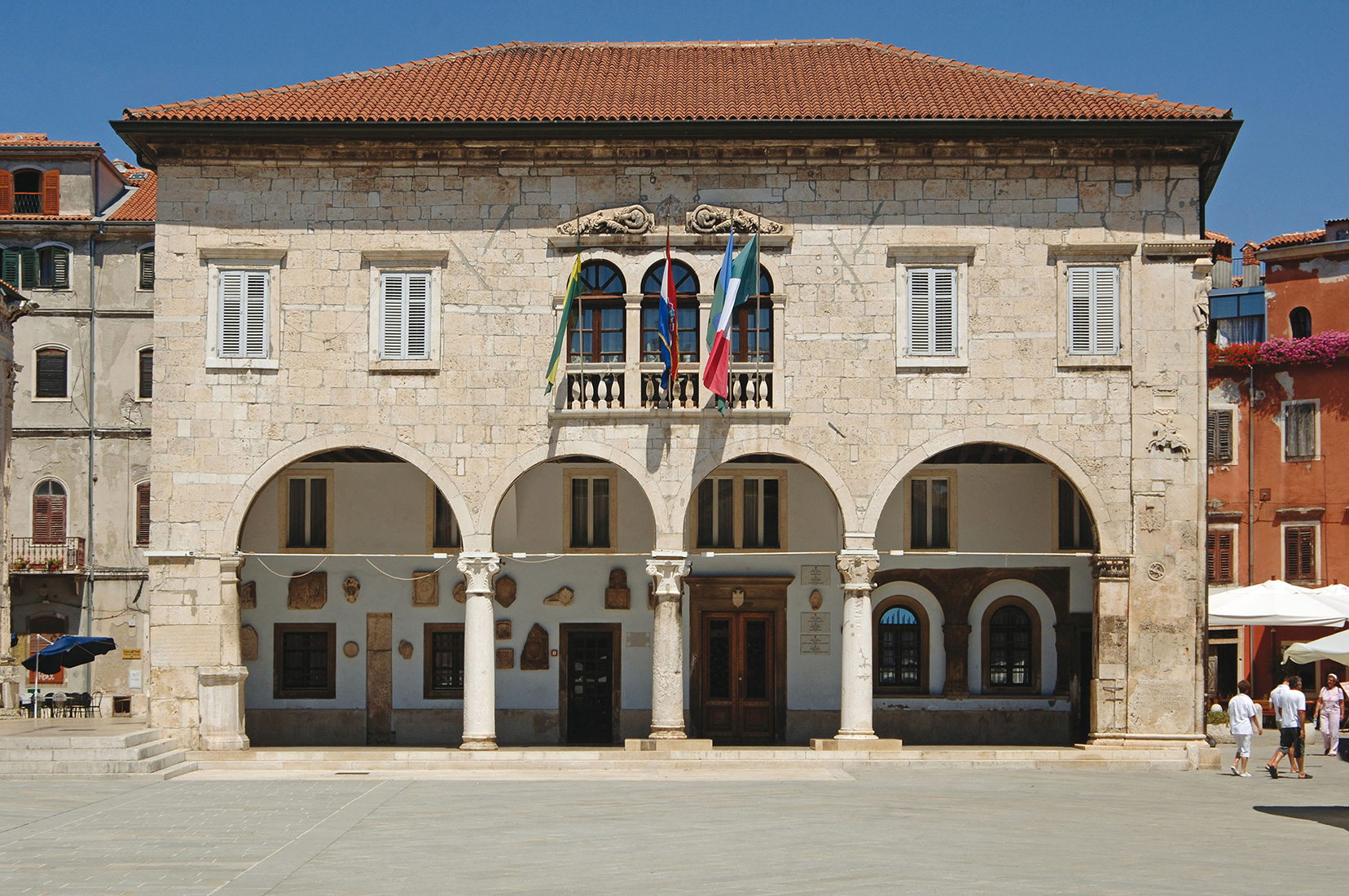
Despite such a complex structure and venerable age, the Town Hall is still an active administrative building, so it is forbidden to enter it. It is located on the central square next to the previous attraction – the Temple of Augustus.
Kashtel Fortress
The majestic fort, located on a hill in the center of the old town, can be seen from anywhere in Pula. The defense complex was built in the 16th century and for more than 300 years protected residents from bloody international wars. The fortress has the shape of a star with 4 corner bastions, but the fort had to survive so many battles that today only powerful stone walls and towers-fortifications remain.
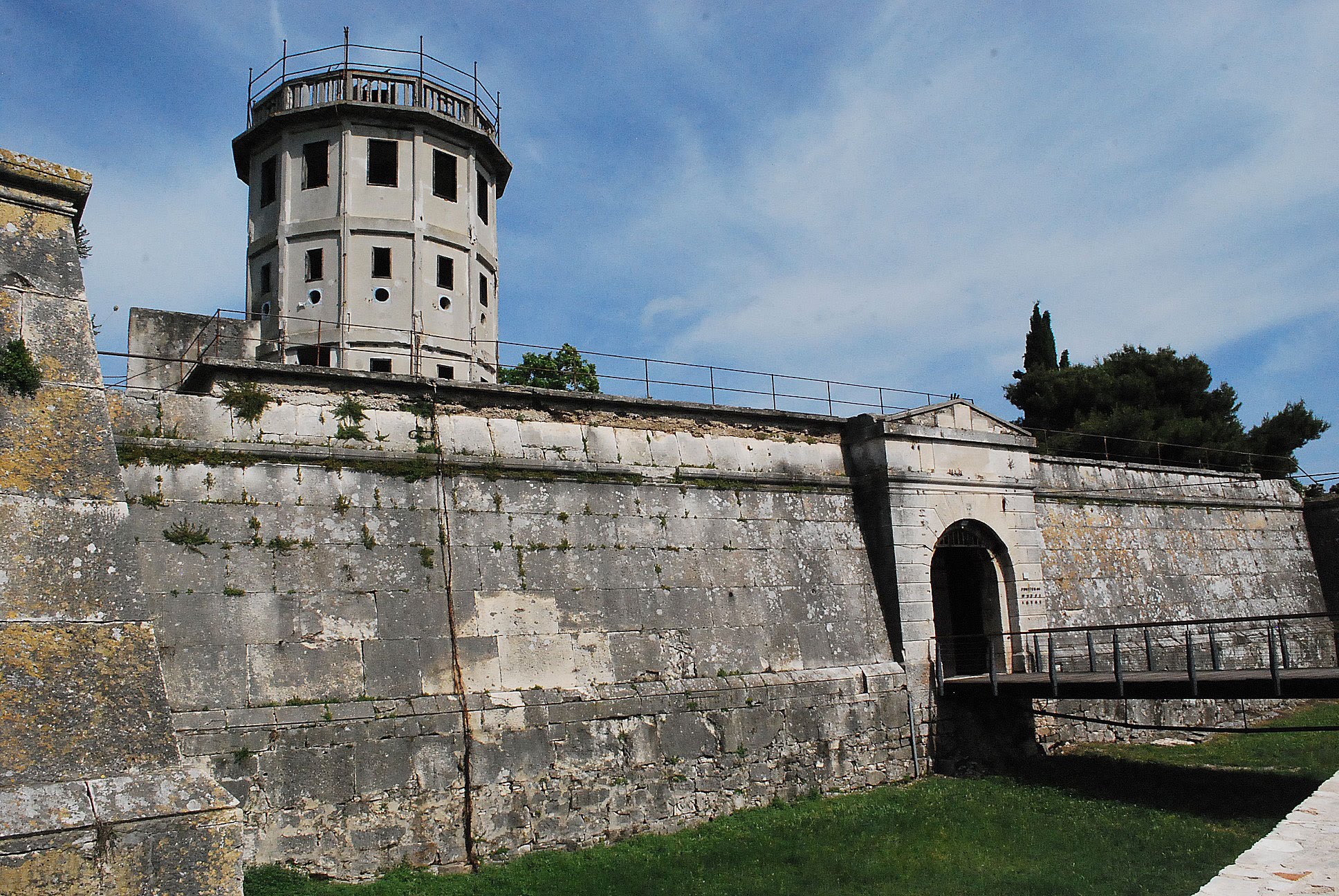
Since 1960, the best Istrian historical and maritime Museum has been operating in Kastel. Among the 65,000 exhibits, you will find ancient weapons, ship remains, military awards and much more. Inside there are several exhibitions with photos and postcards, there is a broadcast of scientific films about the history of navigation. The Castel Towers offer panoramic sea and city views.
- Address: Gradinski uspon 10, Pula.
- The museum is open seven days a week from 9 am to 6 pm.
- The full ticket price is 30 HRK without entrance to tunnels and 40 HRK including tunnels.
Pula’s climate: a visit to the sun

Like the entire Adriatic coast, Pula has a Mediterranean climate. In summer, the air heats up to +27°C, the sea temperature is +24°C, and there is practically no rain. Mild winters and autumns are accompanied by strong winds and heavy rains, especially in November and early December.
It is best to come to Pula at the end of June or August – the bathing season is already open at this time, and the sun does not bake as much as in the middle of summer.
How to get to Pula
From Zagreb
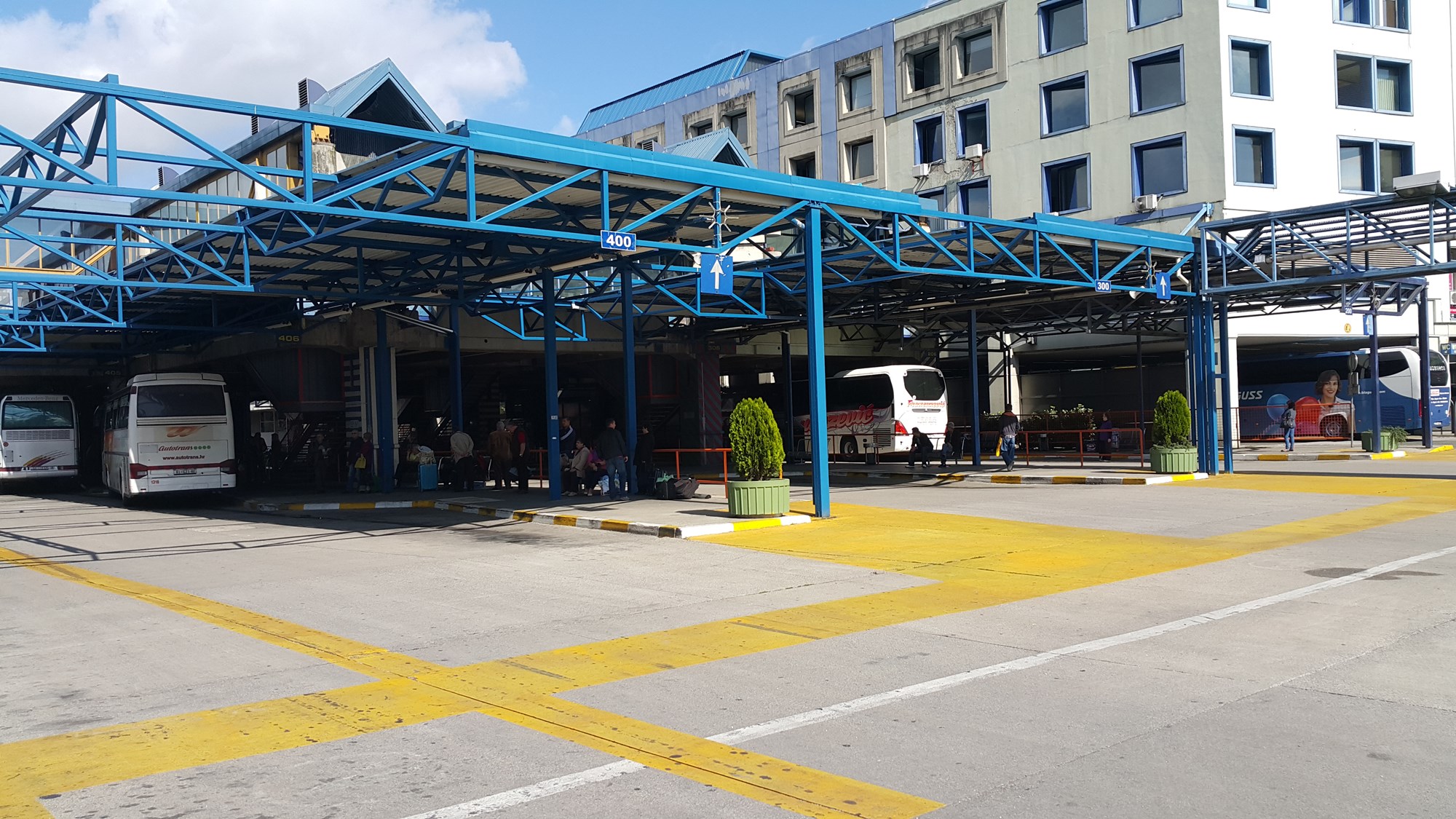
Although there is an international airport in Pula, it only accepts domestic or European flights. After arriving in the Croatian capital, you will need 4.5 hours and from 23.5 euros per person to get to Pula by direct bus. You can buy tickets and find out the exact schedule on the carrier’s website flixbus.com.
From Rijeka
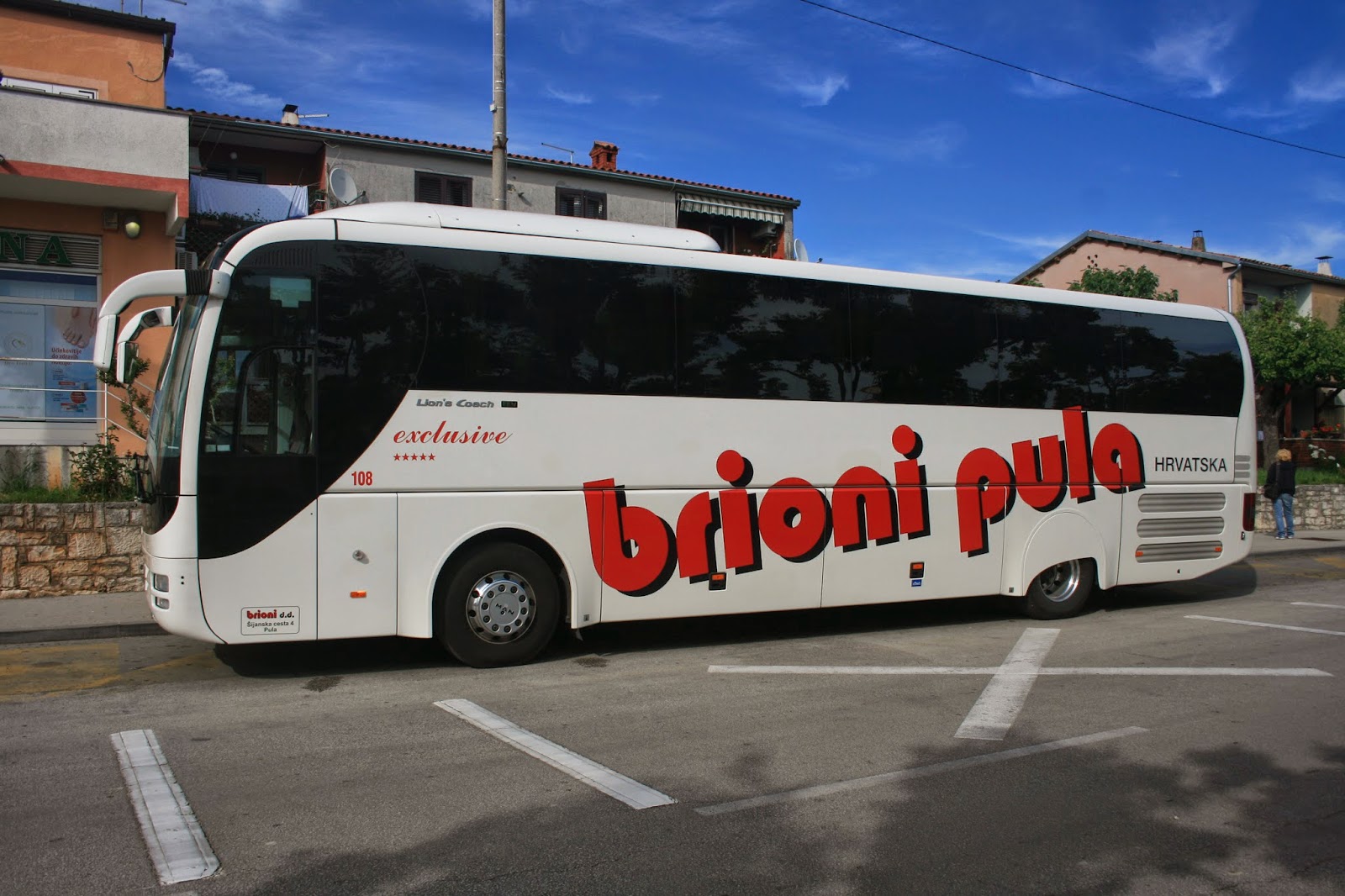
This is the cheapest way to get to Pula from Ukraine, Russia and other CIS countries. After arriving in the historic port city of Rijeka, you will need to walk 15 minutes to the main bus station and take the Brioni Pula bus there. The exact departure time of all 7 minibuses and ticket prices can be found at www.brioni.hr. The final stop is Pula.
From Split
If you have already flown to one of the cultural centers of Croatia and want to visit Pula, you will have to be patient. The cheapest and fastest option:
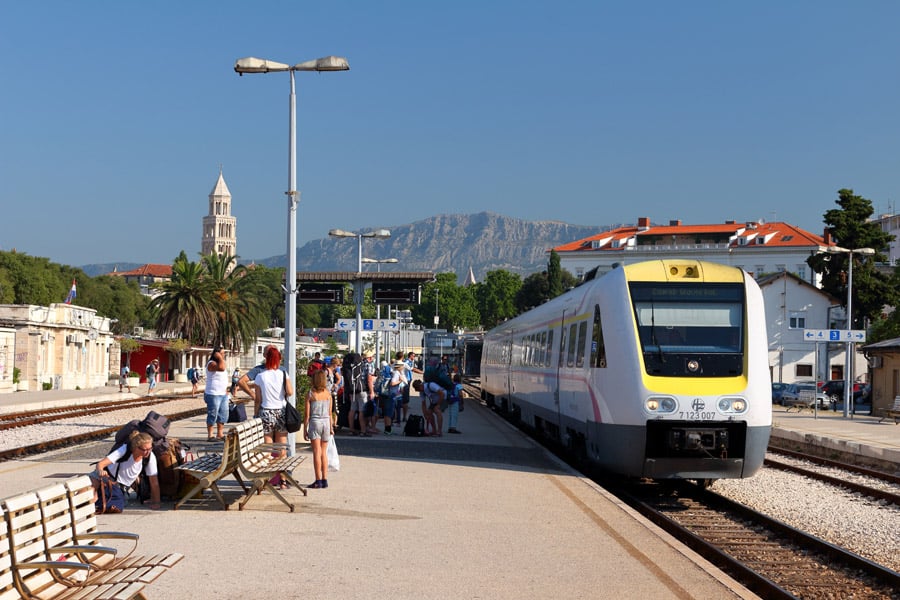
- The first destination is Ostarije Train Station, where you will reach by train number 520 from Split Station. The ticket price is 160 kuna. You can buy it on the website prodaja.hzpp.hr.
- The next intermediate station is called Vrbovsko, which will be reached by train number 4058 or 702. The journey time is 29 minutes. The trip will cost 22 kuna per person.
- From Vrbovsko train station, you need to go to the bus station of the same name and take a bus with a fare of 130 HRK. The journey takes 2 hours and 40 minutes.
If you can handle an 11-hour bus ride and are ready to leave at 5am, a direct bus between Split and Pula is suitable for you for 47-51 euros. Tickets are available for shop.flixbus.com.
Pula (Croatia) is a unique city worthy of your attention. Have a good trip!

